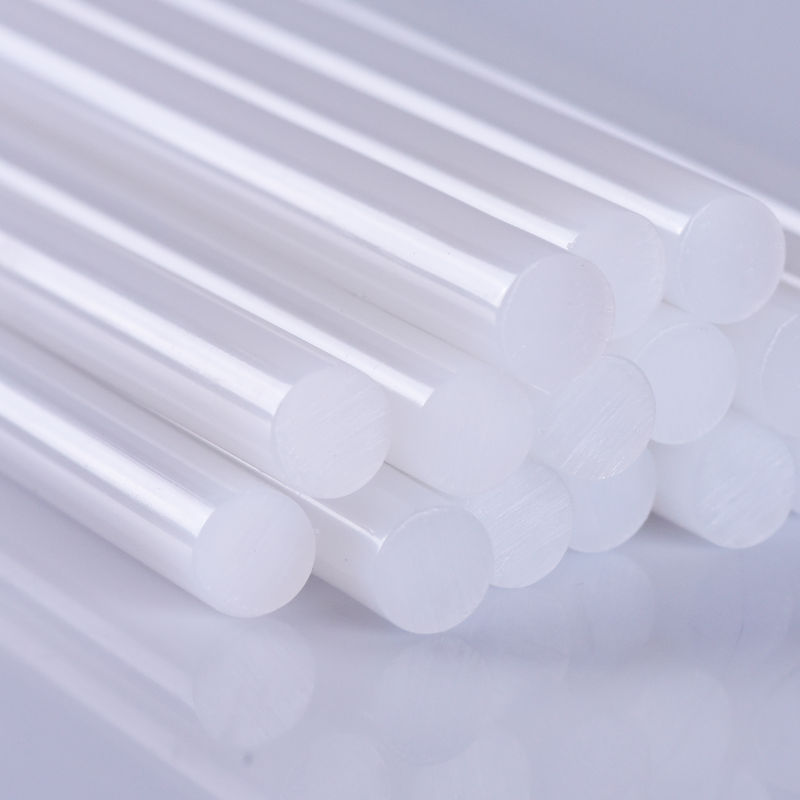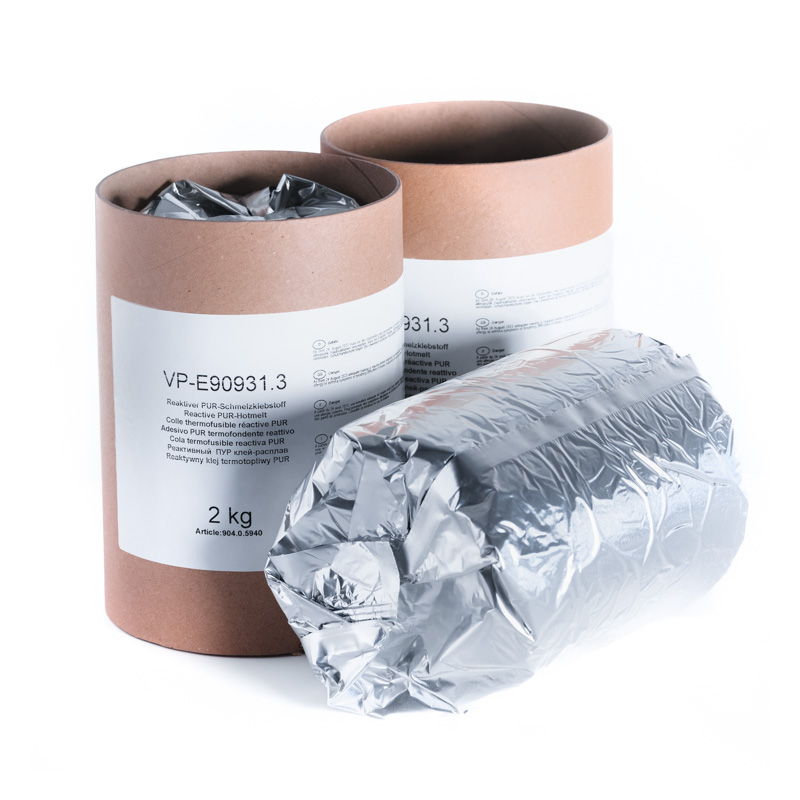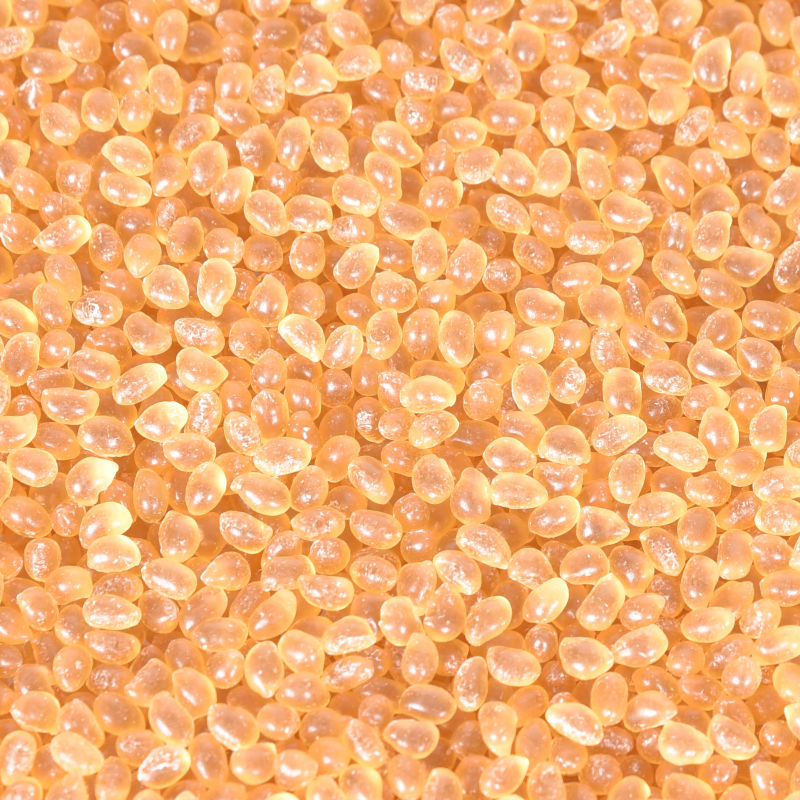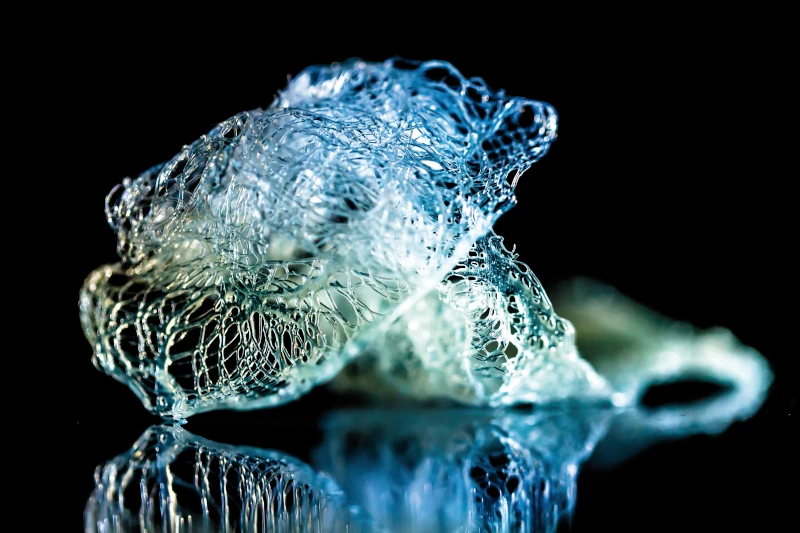What is a hot-melt adhesive
Also Thermoplast, hot adhesive, hot-setting adhesive, hot glue or hot melt

Ø 12 mm Sticks (Ethylen-Vinylacetat)
Hot-melt adhesive are solvent-free, physically setting adhesives that are solid at room temperature. They liquefy at elevated temperatures and become solid again when they cool down later. During the cooling process, they solidify and generally bond surfaces together.
The adhesives are available in granulate form, as a pillow, block, in a drum, in a bag, in a hobbock or as sticks/rods (“candles”). They are melted by means of melting devices, such as hot-glue guns, and then applied to the surfaces to be glued.
Once the adhesive is applied, it begins to cool and harden, becoming solid again. This process happens quickly, so that the parts to be bonded can be connected to each other within a short time.
Hot-melt adhesives are very versatile. They are suitable for bonding a variety of materials, such as paper, cardboard, plastic, wood, metal and textiles.
Adhesive base

Reaktive polyurethane in cardboard sleeve
Hot-melt adhesives can be made from different base materials, depending on their intended applications and specific requirements. Here are some common base types:
- Ethylene Vinyl Acetate (EVA): EVA-based hot melts are widely used and versatile. They adhere well to a variety of materials and provide good temperature stability. EVA adhesives are available in different hardness levels and melting points, facilitating their adaptability to a wide range of applications.
- Polyolefin: Polyolefin-based hot-melt adhesives are commonly used in packaging applications. They are resistant to moisture and chemicals and offer good adhesion to plastics.
- Polyamide (PA): PA-based hot-melt adhesives are known for their high heat resistance and are often used in applications that involve high temperatures, such as in the automotive industry.
- Polyurethane (PUR): PUR-based reactive hot-melt adhesives are widely used and provide excellent adhesion to a variety of surfaces. They are known for their flexibility, impact strength and resistance to moisture and chemicals.
Processing of hot-melt adhesives

Hotmelt granulate (Polyolefin)
- Safety: Hot-melt adhesives are typically applied using hot-glue guns or hot-melt adhesive devices that involve high temperatures. It is important to exercise caution when using, in order to avoid burns or other injuries. Wear appropriate safety equipment, such as heat-resistant gloves and safety glasses.
- Temperature control: The correct temperature is crucial to properly melt and apply the hot-melt adhesive. Use the recommended melter and settings according to the manufacturer’s instructions.
- Cleaning: Keep the melter clean, in order to avoid contamination or old glue residues that could affect performance.
- Adhesion and application guidelines: Follow the manufacturer’s instructions regarding recommended substrates, adhesion times and temperatures. Adhesion can vary depending on materials.
- Storage: Store hot-melt adhesives according to the manufacturer’s instructions to ensure their shelf life.
- Disposal: Dispose excess or used adhesives in accordance with local and environmental regulations.
Exact instructions may vary depending on the specific adhesive and its application, so it is advisable to read and follow the guidelines and safety instructions provided by the manufacturer.
Hot-melt adhesives in key words

Economic efficiency
- Solid, solvent-free
- High processing speed
- No drying systems/ovens required (for removing solvents/curing)
- Wide range of applications in terms of function and material
Processing
- Safe handling
- No flash-off time
- High processing speed
- Automatable application
Occupational safety
- No solvents
- No health risk, exception: PUR
- No risk of fire or explosion
- Problem-free storage and disposal
- No labelling requirements during transport, exception: PUR
- Risk of burns in the application
